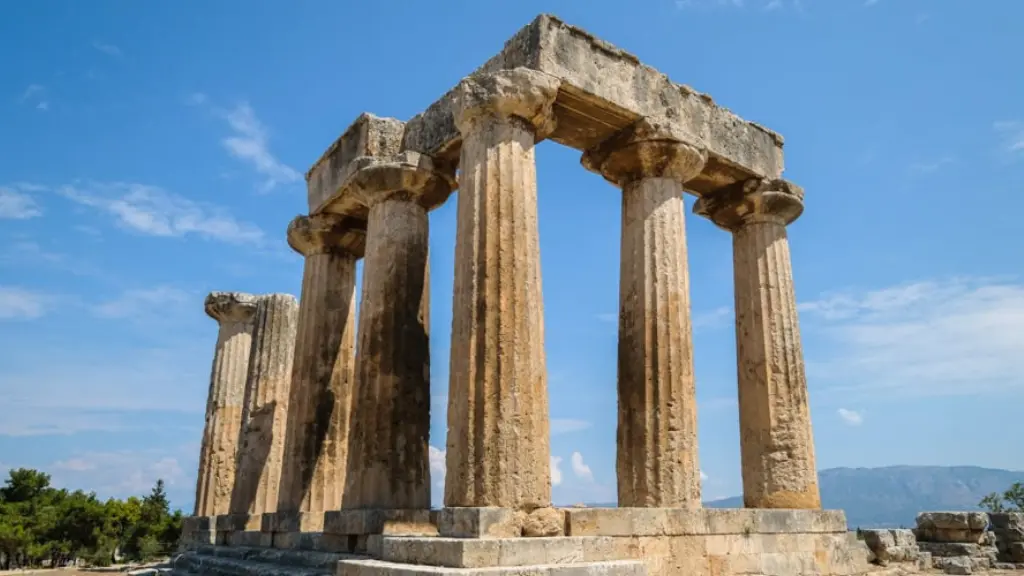If you’re visiting Athens and craving a taste of ancient Greek history beyond the bustling capital, a day trip to Ancient Corinth is an excellent choice. Located about an hour’s drive from Athens, Ancient Corinth is one of the most important archaeological sites in Greece, known for its rich history, awe-inspiring ruins, and proximity to the famous Corinth Canal. This easy day trip offers a chance to explore the ancient world and experience another side of Greece’s cultural heritage.
In this guide, we’ll cover everything you need to know to plan the perfect day trip to Ancient Corinth—from how to get there to what to see and do during your visit.
You May Also Like: Discover Ternate Island: A Complete Travel Guide & Best Things to Do in Maluku, Indonesia
1. Getting from Athens to Ancient Corinth
There are several ways to reach Ancient Corinth from Athens, making it an accessible destination for a day trip. Depending on your travel style and preferences, you can choose between renting a car, taking public transport, or joining an organized tour.
By Car
The most convenient and flexible way to visit Ancient Corinth is by renting a car. The drive from Athens takes about 1 hour, covering approximately 85 kilometers (53 miles). Take the A8 Highway from Athens toward Corinth, and you’ll pass by stunning coastal views of the Saronic Gulf along the way.
Renting a car gives you the freedom to explore Corinth at your own pace and visit nearby sites like the Corinth Canal and Acrocorinth. Additionally, driving allows you to stop at other places of interest, such as the Temple of Apollo or the beach at Loutraki.
By Train or Bus
If you prefer public transport, you can easily take a train or bus from Athens to Corinth. The Proastiakos suburban train runs from Athens Central Railway Station (Stathmos Larissis) to Corinth’s modern city, where you can take a short taxi ride to the archaeological site. The train journey takes about 1 hour.
Alternatively, KTEL buses run from Athens’ Kifissos Bus Station to modern Corinth (Korinthos). Buses depart every hour, and the journey takes around 1 hour and 15 minutes.
Organized Tours
For a hassle-free experience, you can book an organized tour that includes transportation, guided tours, and sometimes lunch. Many tours also include visits to nearby attractions like Mycenae or Epidaurus, allowing you to see more of the Peloponnese region in a single day.
2. What to See at Ancient Corinth
Once you arrive in Ancient Corinth, you’ll be transported back to one of the most significant cities in ancient Greece. Here are the must-see highlights during your visit:
Temple of Apollo
The Temple of Apollo is the most iconic landmark of Ancient Corinth. Built in the 6th century BCE, this impressive Doric temple once dominated the ancient city’s skyline. Today, seven of its original 38 columns still stand, offering a glimpse into its former grandeur. The temple is a testament to Corinth’s historical significance during the Classical period.
Archaeological Museum of Ancient Corinth
Adjacent to the ruins, the Archaeological Museum of Ancient Corinth is home to a vast collection of artifacts discovered during excavations. Inside, you’ll find a range of treasures, from statues and pottery to mosaics and inscriptions that showcase the city’s daily life and artistic achievements. A visit to the museum helps bring the ancient ruins to life and provides deeper insights into Corinth’s past.
Lechaion Road
The ancient Lechaion Road was one of the main streets that connected Corinth to its port. Walking along this road today, you can still see remnants of ancient shops, fountains, and columns that once lined this bustling thoroughfare. The road leads to the city’s agora (marketplace), where ancient Corinthians would have traded goods and gathered for social activities.
The Agora
The agora was the heart of Ancient Corinth, serving as a political, social, and commercial hub. This large, open area is where public meetings and important gatherings took place. The ruins of shops, stoas (covered walkways), and public buildings are still visible, offering a window into the daily life of the ancient Corinthians.
Bema of Saint Paul
One of the most significant landmarks in Ancient Corinth is the Bema, a raised platform where Saint Paul is said to have stood during his trial. Corinth is one of the cities where Paul preached Christianity, and the Bema is an important religious site for Christian pilgrims. Visiting the Bema provides a connection to both ancient history and early Christian traditions.
3. Corinth Canal: A Modern Marvel
No visit to Corinth is complete without stopping at the Corinth Canal, an engineering feat that connects the Aegean Sea with the Ionian Sea. The canal was completed in 1893 and cuts through the narrow Isthmus of Corinth, creating a shortcut for ships. While it’s only 6 kilometers (3.7 miles) long, the sheer cliffs rising on either side make for an impressive sight.
You can stop at the canal bridge for stunning views of this narrow waterway or even take a boat cruise through the canal for a unique perspective. Many visitors combine a trip to Ancient Corinth with a brief stop at the canal, as it’s just a short drive from the archaeological site.
4. Explore Acrocorinth
Rising above the city of Ancient Corinth is the imposing fortress of Acrocorinth, a massive acropolis that served as the city’s primary defense. The climb to the top is well worth the effort, as it offers panoramic views of the surrounding countryside and coastline. Acrocorinth was in use from ancient times through the Middle Ages, and the fortifications you see today include elements from Greek, Roman, Byzantine, and Ottoman periods.
The hike up to Acrocorinth takes about 30-45 minutes, but the views from the summit make it one of the most rewarding experiences on your day trip. It’s a perfect spot for history lovers and outdoor enthusiasts alike.
5. Tips for Visiting Ancient Corinth
- Wear comfortable shoes: Ancient Corinth’s archaeological site covers a large area with uneven terrain, so comfortable footwear is essential for exploring.
- Bring water and snacks: Although there are some facilities around, it’s a good idea to bring your own water and snacks, especially on hot days.
- Start early: If you want to avoid the midday heat and crowds, aim to arrive early in the morning.
- Visit in spring or fall: The cooler temperatures of spring and fall make these seasons the best time to explore Ancient Corinth and the surrounding area.
- Combine your trip: If you have extra time, consider combining your day trip with visits to nearby sites like Nafplio, Mycenae, or Epidaurus.
Final Thoughts: A Journey Through Time
Visiting Ancient Corinth offers a fascinating glimpse into one of Greece’s most important ancient cities, just a short distance from Athens. Whether you’re exploring the ruins of the Temple of Apollo, walking in the footsteps of Saint Paul, or marveling at the engineering feat of the Corinth Canal, a day trip to this region is a must for any history lover or cultural explorer. With its rich history, archaeological treasures, and scenic landscapes, Ancient Corinth is a journey back in time that adds depth to any Greek adventure.










